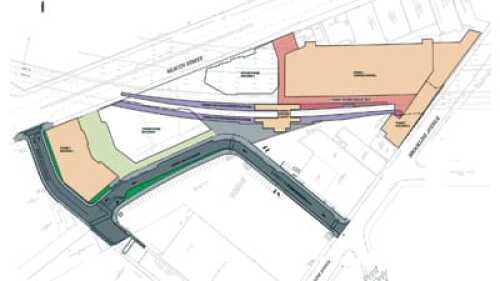Residential
A radical proposal put forth by California Governor Jerry Brown is calling for all 260 redevelopment agencies statewide to be abolished as a way to help close the state’s budget gap—which means that large, long-term projects would simply not get off the ground. Read about the myriad implications—for the real estate industry as well as the state—that were discussed at a ULI panel in San Francisco.
At the bottom of each cycle, there are those who identify niche opportunities, imagine concepts, and innovate with communities and housing products that get people back into the market. As the industry emerges from the recent recession—and works to imagine what people want, can afford, and will buy and rent—it ponders this question: what will planned communities look like in the future?
At the end of 2010, the U.S. homeownership rate fell to 66.5 percent—the lowest rate since 1998. And the six-year trend of households going from owning to renting a home continues. Read how demographic trends, ongoing high levels of foreclosures, high unemployment and underemployment, and tightened standards for mortgage financing are poised to affect the number of new homes sold going forward.
On February 11, the U.S. Treasury and HUD issued a paper on reforming the government-sponsored entities (GSEs)—namely, Fannie Mae and Freddie Mac. John K. McIlwain, Senior Resident Fellow, ULI/J. Ronald Terwilliger Chair for Housing, notes that for the first time in 70 years, an administration—a Democratic one at that—backed away from an all-out commitment to homeownership and even pulled its support from Fannie and Freddie. Read about the three options that are being contemplated to replace the GSEs.
Following leaders Houston, Dallas–Fort Worth, and the District of Columbia area, the most active 2010 apartment construction markets include Los Angeles, Tampa, Seattle, Baltimore, Boston, Miami, and Indianapolis. Construction lenders are now competing for deals in these and other promising markets as developers make plans for the post-recession economy.
To shift sustainable development to a new level, design professionals are turning to biomimicry, a way to understand and apply a particular location’s “genius of place” to designing buildings and communities. Find out how architectural-engineering firm HOK and the Montana-based Biomimicry Guild are using bio-inspired design adaptations in two new communities in a deciduous forest in India.
Lew Sichelman notes that, after two years of declines, the size of the average home is increasing once again after peaking at 2,520 square feet (234.3 sq m) in 2007. An analyst at the National Association of Home Builders, however, warns against believing that the trend toward downsizing is over. Learn where the size of the average home is increasing and how the components of new homes are changing to meet consumer demand.
Growing consumer awareness of green building benefits is increasing demand for sustainable features—a trend that got a boost when California set zero-energy guidelines for new residential and commercial development of 2020 and 2030, respectively. Read how builders are offering new homes that produce as much energy as they use, at price points comparable to those for traditionally built homes.
Inserting contemporary architecture into a historic neighborhood requires a sensitive approach. The new building should avoid resembling an alien creature dropped from the sky, but, at the same time, distinctive contemporary architecture adds to the life of the city. Learn how ten projects weave new housing into existing urban environments.
Ken Harney writes that with Republicans now in control of the House, and a slimmed-down Democratic majority in the Senate, is President Obama’s bipartisan Commission on Fiscal Regulation and Reform’s plan as moribund as even some of its most ardent proponents assume?




